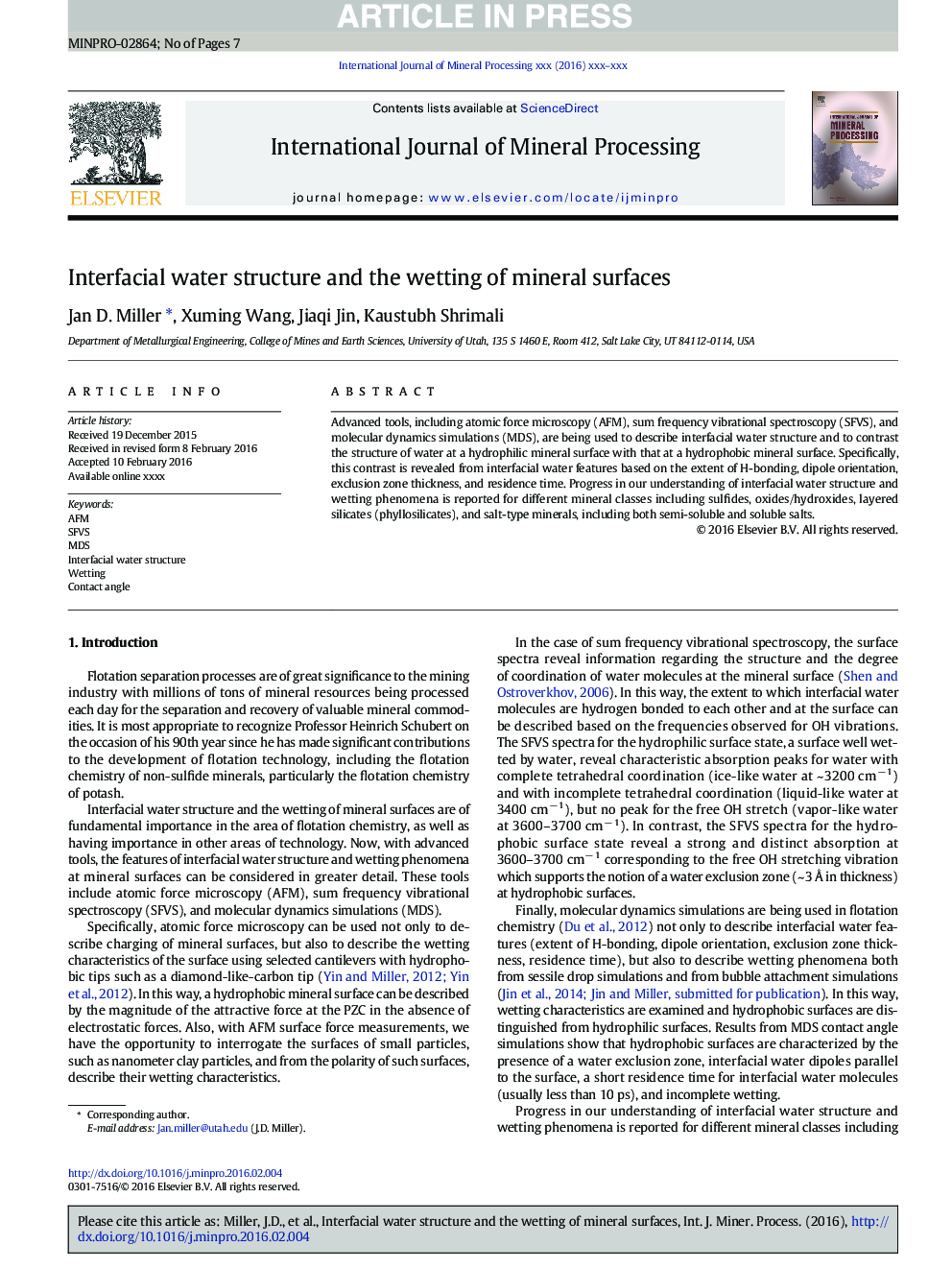| Article ID | Journal | Published Year | Pages | File Type |
|---|---|---|---|---|
| 4769485 | International Journal of Mineral Processing | 2016 | 7 Pages |
Abstract
Advanced tools, including atomic force microscopy (AFM), sum frequency vibrational spectroscopy (SFVS), and molecular dynamics simulations (MDS), are being used to describe interfacial water structure and to contrast the structure of water at a hydrophilic mineral surface with that at a hydrophobic mineral surface. Specifically, this contrast is revealed from interfacial water features based on the extent of H-bonding, dipole orientation, exclusion zone thickness, and residence time. Progress in our understanding of interfacial water structure and wetting phenomena is reported for different mineral classes including sulfides, oxides/hydroxides, layered silicates (phyllosilicates), and salt-type minerals, including both semi-soluble and soluble salts.
Related Topics
Physical Sciences and Engineering
Chemical Engineering
Chemical Engineering (General)
Authors
Jan D. Miller, Xuming Wang, Jiaqi Jin, Kaustubh Shrimali,
